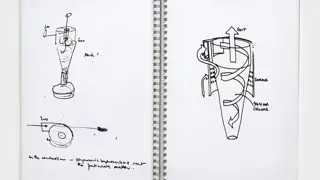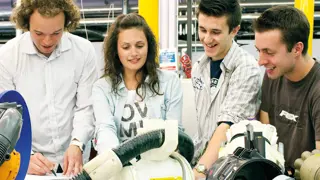"At school I opted for arts, put off by all the formulae in science. There was nothing that combined the two like design engineering does. I only stumbled on engineering by accident and immediately decided what I wanted to do - make things that work better".

DISSATISFACTION, REAPPLIED
THERE HAD TO BE A BETTER WAY
In 1978, dissatisfied with the performance of his new Hoover Junior, James had an idea. He'd spotted a local sawmill using cyclone technology to separate sawdust particles from the air. Could this work on a vacuum cleaner? James ripped off his Hoover's clogging, stinking bag and replaced it with a crude cardboard prototype of his cyclone design - and it worked!

PERSEVERANCE AND PERFECTIONISM
5,127 PROTOTYPES
James knew he was onto something, but it would take time to perfect his idea. Five years and 5,127 prototypes later, he created DC01, the world's first bagless vacuum cleaner.

ENGINEERING TOMORROW
THE JAMES DYSON FOUNDATION
Every year, the UK faces an annual shortfall of 59,000 engineers (EngineeringUK). Feeling strongly that bright minds shouldn't miss out on an engineering career, as James nearly did, he set up the James Dyson Foundation in 2002 to challenge misconceptions about engineering and combat the shortage.

GLOBAL AMBITION
THE GLOBAL CHALLENGE
The demand for engineers isn't limited to the UK. We need them all over the world. The James Dyson Foundation launched in the US in 2011, followed by Singapore, Malaysia, Japan and the Philippines. The Foundation also runs activities across other countries and regions, encouraging young people from across the globe to pursue an engineering career.


